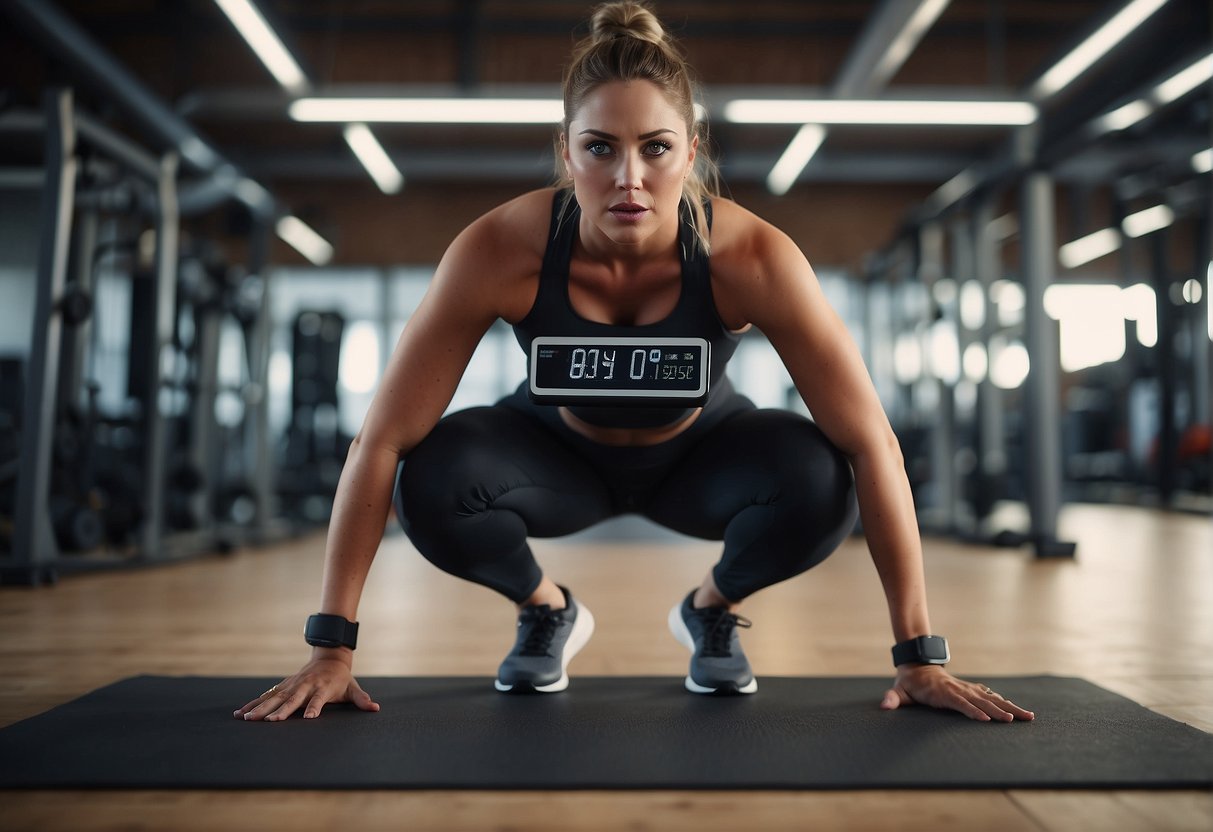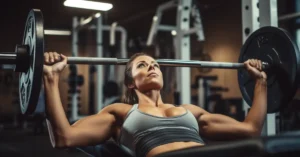📦 FREE Shipping
How Many Calories Does 100 Squats Burn 2024: Surprising Facts

Drop it low in the quest for fitness with “How Many Calories Does 100 Squats Burn: Surprising Facts,” where we squat down to uncover the caloric burn of this powerful lower-body exercise.
How Many Calories Does 100 Squats Burn?
Squats are a powerful strength exercise targeting multiple muscle groups in your lower body, including the quadriceps, hamstrings, glutes, and calves. They are performed by standing with your feet shoulder-width apart, then lowering your body as if sitting in an invisible chair and standing back up.
When executed with proper form, squats not only strengthen muscles but also enhance joint health and flexibility.
Calories and Energy Expenditure
Calories represent the energy you burn through various activities, and exercise is a potent way to increase your energy expenditure.
When you perform squats, you’re essentially using your body weight as resistance, and the amount of calories burned can vary based on intensity and duration. Generally, more intense squat sessions yield a higher calorie burn, aiding in weight management and overall fitness.
The Role of MET in Calorie Burning
The MET (Metabolic Equivalent of Task) value is a standardized unit that gauges the energy cost of physical activities, translating them into calories burned. One MET is the energy rate expended at rest, and exercise METs scale up from that baseline.
To calculate calories burned from squats, you can use a formula involving your weight in kilograms, the MET value of squats (which typically ranges from 3.5 to 8 for squat exercises), and the duration of your exercise in minutes.
Factors Influencing Calories Burned During Squats
Impact of Body Weight
The heavier you are, the more calories you’ll burn. This is because your body must work harder to squat with more mass. Here’s a quick look:
- Light Body Weight: Fewer calories per minute
- Heavy Body Weight: More calories per minute
For example, weighing 150 pounds, you might burn approximately 0.24 calories per squat.
Effect of Exercise Intensity
Push the intensity and watch those calories sizzle away! Squat faster and increase the weight to level up:
- Low Intensity: Slower pace, lighter weights, fewer calories
- High Intensity: Faster pace, heavier weights, more calories
Using more muscles during high-intensity squats maximizes your effort, skyrocketing the calories burned per minute.
Influence of Squat Variations
Mix up your squats, and you could see a serious calorie burn bump. Each variation challenges your muscles differently:
- Standard Squat: Good for beginners; moderate calorie burn
- Jump Squat: Uses more energy; increases calorie burn
- Weighted Squat: Adding weights significantly boosts calorie burn
The right squat variation targets different muscles and shakes up your metabolism to maximize those calories torched.
Maximizing Squat Workouts for Calorie Burning

Muscles targeted: glutes, hamstrings, quadriceps, and calves.
- Stance: Start with your feet shoulder-width apart, with your toes slightly turned out.
- Movement: Keeping your back neutral, hinge at the hips and knees, lowering down as if sitting in a chair.
- Depth: Aim to get thighs parallel to the floor—deeper squats activate more muscles, upping the intensity.
- Posture: Keep your chest up and your knees tracking over toes; avoid letting knees cave inward.
- Drive: Push through your heels to return to the starting position, engaging your core for stability.
Maintaining proper form ensures you’re engaging the right muscles effectively and safely, maximizing your caloric expenditure with every rep!
Incorporating Weights into Squats
Boost intensity: adding weight increases resistance and elevates calorie burn.
- Dumbbells: Hold a dumbbell in each hand at shoulder height or at your sides.
- Barbell: Rest a barbell across your upper back, not the neck, gripping it wider than shoulder-width.
- Kettlebells: Hold a kettlebell close to your chest with both hands, elbows pointing down.
- Progression: Start with lighter weights, progressively increasing as you grow stronger.
Advanced Squat Variations
Intensity through diversity: challenging muscles with new movements can spike your calorie-burning potential.
- Jump Squats: Add a jump as you rise from the squat position, landing softly to protect your joints.
- Pistol Squats: Test your balance with this one-legged squat variant, swapping sides for each rep.
- Weighted Squat Jumps: Holding weights while performing jump squats can skyrocket the effort—and the calorie burn.
- Resistance Bands: Place a resistance band around your thighs to activate your glutes and hamstrings even more.
FAQ:
Is 100 squats a day good?
Yes, doing 100 squats a day can strengthen your lower body and improve muscle endurance, as long as you maintain proper form.
How many calories do you burn doing 1000 squats?
Doing 1000 squats could burn approximately 100 to 300 calories, depending on your weight and squat intensity.
Does 30 jump squats burn 100 calories?
Thirty jump squats may burn around 15 to 30 calories, so it’s unlikely to reach 100 calories with just 30 jumps.
How many calories does 75 squats burn?
Seventy-five squats might burn about 24 calories, assuming an average burn rate of around 0.32 per squat.
If this article about “How Many Calories Does 100 Squats Burn” helped you, don’t forget to leave us a comment below about what you think of the article.


